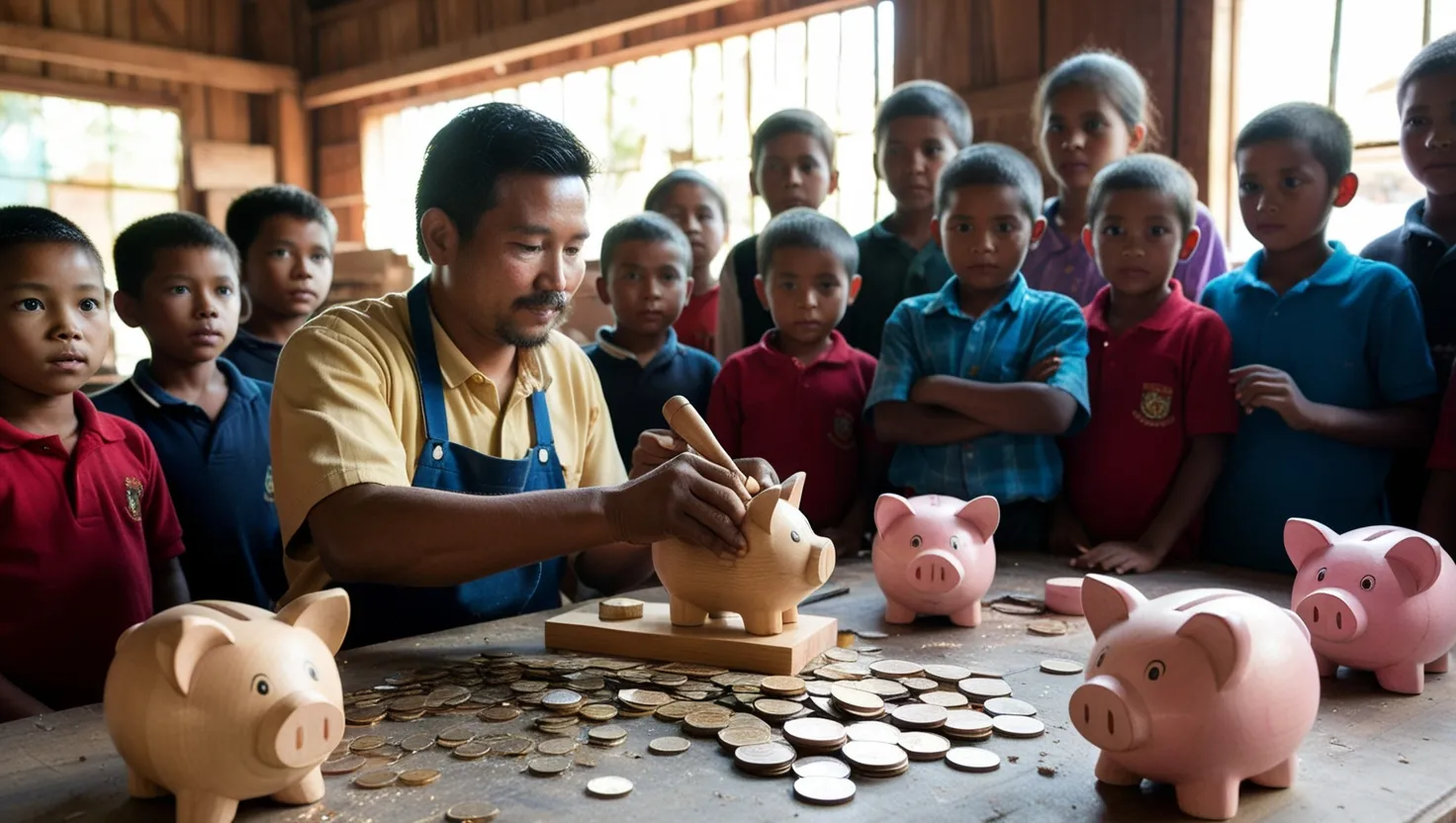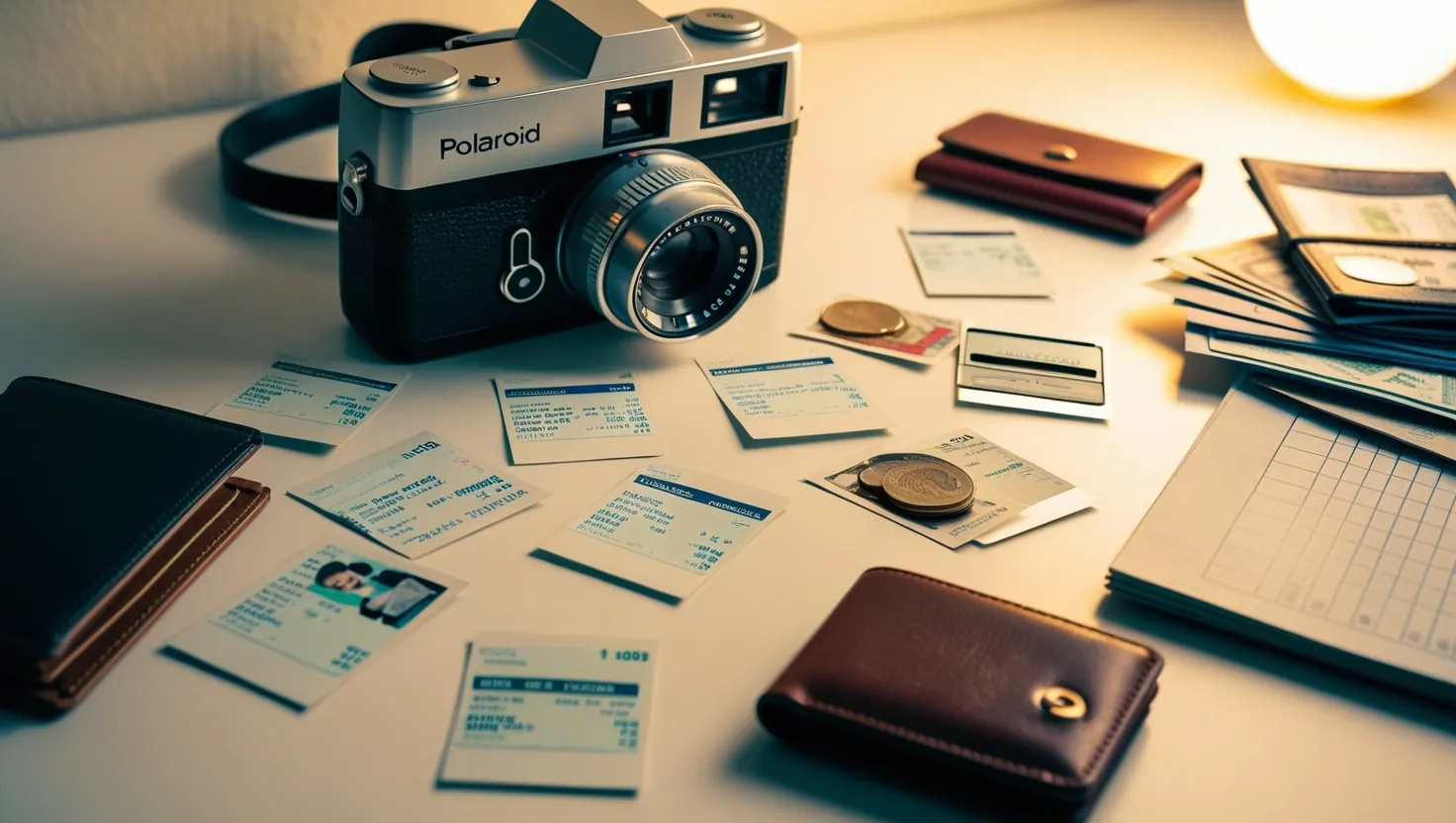Lucas was never much of a talker. Words were like wood shavings—hard to grasp, scattered, and often discarded. But in the aftermath of the financial crisis, when the neighborhood was hushed by uncertainty, Lucas found his voice in the grain of wood. It started with a simple idea: piggy banks. Not the plastic, mass-produced kind, but wooden ones, carved by hand, each unique, each telling a story.
The crisis had left many families struggling. Jobs were lost, savings dwindled, and the neighborhood children often heard hushed conversations about “cutting back” or “making do.” Lucas, a carpenter by trade, felt the weight of it too. His workshop, once bustling with orders, grew quiet. But instead of letting the silence consume him, he listened to it. And in that stillness, he heard something: the faint, hopeful hum of possibility.
He began with scraps of wood—leftover pieces from old projects, discarded furniture, even fallen branches from the park. Each piece had a history, a texture, a soul. Lucas saw potential in what others might call waste. He carved, sanded, and polished, turning these fragments into something whole. And then, he started giving them away.
The first piggy bank went to Mia, a six-year-old with wide eyes and a penchant for asking too many questions. “Why is it so heavy?” she asked, holding the smooth, dark wood in her hands. Lucas smiled. “Because it’s not just a bank,” he said. “It’s a promise. Every time you put a coin in, you’re building something.” Mia didn’t fully understand, but she nodded, her fingers tracing the curves of the wood.
Soon, more children came. Lucas didn’t advertise; word just spread. Parents noticed the piggy banks on their children’s shelves, filled with coins and the occasional candy wrapper. They saw their kids talking about saving, about goals, about dreams. And they saw Lucas, who had always been a quiet presence in the neighborhood, becoming a part of something bigger.
“Why do you do this?” a neighbor asked one day, watching Lucas carve another piggy bank. He paused, his hands resting on the wood. “Because they need it,” he said simply. “And so do I.”
The piggy banks became more than just containers for coins. They became vessels for dreams. Mia saved for a bicycle. Jake saved for a trip to the zoo. Emma saved for a new pair of roller skates. Each child had a goal, and Lucas made sure they knew that every coin brought them closer. He didn’t talk much, but when he did, it mattered. “A little every day,” he would say. “That’s how you build something.”
As the children saved, Lucas found himself saving too—not money, but memories. He remembered the first time he picked up a chisel, the way the wood felt in his hands, the way it smelled. He remembered his father, who had taught him to carve, and the long afternoons spent in the workshop, the two of them silent but connected. He remembered the last thing his father had said to him: “You’ll find your voice in the wood.” At the time, Lucas hadn’t understood. Now, he did.
The workshop became a gathering place. Children would come after school, watching Lucas work, asking questions, telling stories. He didn’t just give them piggy banks; he gave them lessons. “See this grain?” he would say, pointing to a piece of wood. “It’s like life. It has its twists and turns, but if you follow it, you’ll find the beauty.” The kids nodded, not always understanding but always listening.
One day, Mia came back with her piggy bank, now heavy with coins. “I’m ready,” she said, her voice trembling with excitement. Lucas helped her open it, the coins spilling out onto the table. She counted them carefully, her eyes lighting up as she realized she had enough. “Thank you,” she said, hugging him tightly. Lucas didn’t say much, but his eyes said everything.
The neighborhood began to change. People started talking again—not about the crisis, but about their hopes, their plans, their dreams. Lucas’s piggy banks became a symbol of resilience, a reminder that even in the hardest times, there was something to save, something to build. And through it all, Lucas found his voice, not in words, but in the sound of wood being carved, coins clinking into banks, and children laughing.
“Dreams are like seeds,” he once told a group of kids. “They need time, care, and a little bit of hope to grow.” The children didn’t need to ask what he meant. They could see it in the way he worked, in the way he looked at them, in the way he believed in them.
As the months turned into years, Lucas’s workshop became a place of legend. Parents would bring their children, telling stories of how their own piggy banks had inspired them to save, to dream, to build. And Lucas, who had always been a man of few words, became a man of many stories. He didn’t need to speak loudly; his work spoke for him.
In the end, it wasn’t just about the piggy banks. It was about what they represented—hope, resilience, and the power of small, consistent actions. Lucas didn’t save the world, but he saved a little piece of it, one wooden bank at a time. And in doing so, he found his voice, not in the words he spoke, but in the lives he touched.
“The best way to predict the future,” someone once said, “is to create it.” Lucas didn’t know who said it, but he lived it every day, carving not just wood, but a legacy of dreams.
So, what’s your piggy bank? What are you saving for? And more importantly, what are you building? Sometimes, the quietest actions speak the loudest. And sometimes, the simplest things—a piece of wood, a coin, a dream—can change everything.






